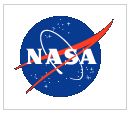
NASA published a Notice of Intent to Grant a Partially Exclusive License a few days ago. It caught my eye because the notice was so cryptic. The notice gives the following disclosure: "NASA hereby gives notice of its intent to grant a partially exclusive license in the United States to practice the invention described and claimed in U.S. Patent Application Serial No. 13/987,251 entitled Fluid Harmonic Absorber and U.S. Patent No. 8,939,178 entitled Variable-Aperture Reciprocating Reed Valve to Thornton Tomasetti, Inc., having its principal place of business in New York, NY."

What is that all about?
By law, NASA and other government agencies must publish notice of their intent to grant exclusive licenses so that members of the public have a 15-day chance to object before the license can be granted. I find the notices to be fairly unhelpful because they are not readily understandable. On the technology side, the patent application referenced in the notice has not been published so you couldn't study it – even if you wanted to or needed help falling asleep. As to the patent, it is available, but the notice does not explain anything about the rights being granted to Tomasetti. Ignoring the technology for a moment, the notice brings to mind a couple of questions: (1) what are the differences between exclusive licenses and non-exclusive licences (and assignments for that matter); and (2) what is a partially exclusive license?"
Exclusive Licenses vs Non-exclusive Licenses
An exclusive license occurs when an owner of a particular right grants the entire right to one third party; only the exclusive licensee and not even the owner has permission to exercise the right granted. For example, if I own all the rights to a movie script and I grant you an exclusive license to the script, only you can exploit it.
A non-exclusive license occurs when an owner of a particular right grants one or more third parties permission to exercise the same right; each non-exclusive licensee may have identical rights and the owner may also keep the same rights. For example, if I own all the rights in a software application and I grant permission to each of my customers to use it.

What then is the difference between a license and an assignment? Starting with the non-exclusive license, the owner retains ownership, title, and any rights that are not given to the licensee. The difference between exclusive licenses and assignments is not so readily apparent. If an owner grants all its rights to an exclusive licensee, then there is not much difference because the owner has not retained much, if anything. In fact, often exclusive licensees can sue third parties without even needing the owner. On the other hand, assignments are outright transfers of ownership. So looking at the notice again, we see that NASA proposes to grant Tomasetti (and no one else) a particular right to exercise these patent claims.
Partially Exclusive Licenses?
I think the phrase "partially exclusive" is really confusing/misleading in a license context. How can something be "kind of" exclusive? According to the Department of Energy (a discussion for another day about how/why DOE cares), a partially exclusive license is one where the right granted "(1) . . . is limited to making or using or selling the invention, or is limited to specified fields of use or use in specified geographic locations; or (2) a license where the number of licenses under the particular invention is limited." Meanwhile, NASA's website says a partially exclusive license is: "A legal document granting intellectual property rights to a pre-determined number of recipients (more than one) for a specific field of use or geographic area. This is also referred to as a Field of Use license." BTW, a Field of Use License is typically a license to use a right in a particular type of application or industry (i.e, for a particular type of product or application).

I personally hate the term "partially exclusive," but I also think that the term is broader than a Field of Use License." Sometimes partially exclusive licenses are also referred to as "limited" exclusive licenses.
There are three common types of limits placed on exclusive licenses:
- Time Limits – A license may be exclusive for a fixed amount of time or until revenues drop below a certain amount.
- Fields – If you can imagine a field, you can exclusively license the field. Examples include, commercialization, research, types of applications, types of treatments, or particular industries.
- Geography – A license may be exclusive within a particular geographic area (i.e., here NASA has indicated the U.S.) or granted to different licensees in different geographic areas.
I apologize if you hoped you would learn more about the details of what exactly NASA proposes, but the notice is simply to cryptic, and the return on investment from time spent calling NASA to inquire seemed pretty low.
The content of this article is intended to provide a general guide to the subject matter. Specialist advice should be sought about your specific circumstances.

